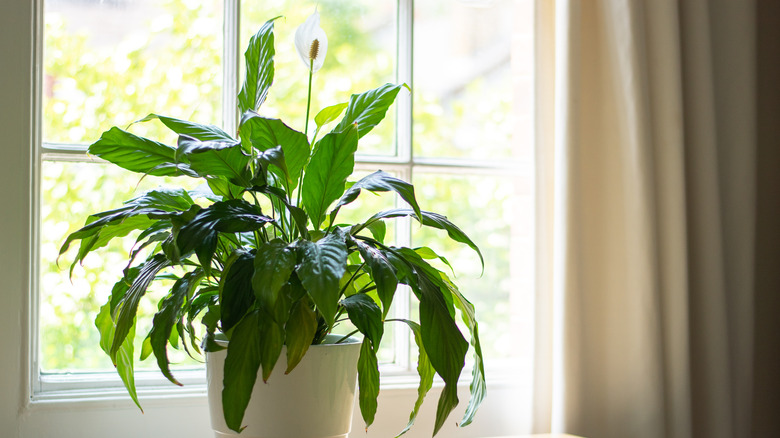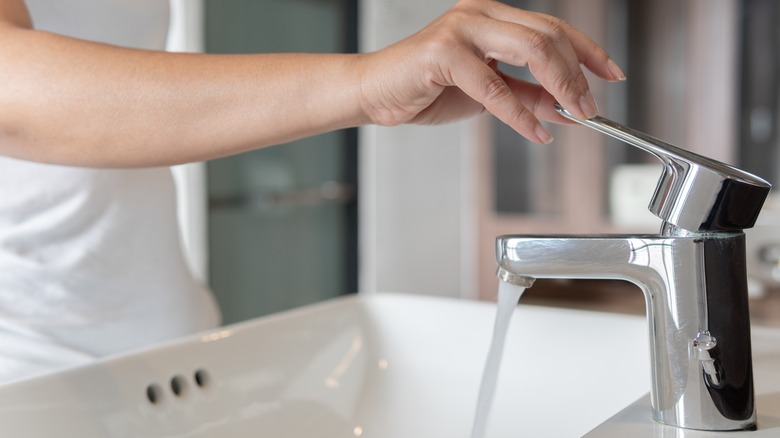The Best Method For Watering Peace Lilies
Peace lilies are popular houseplants that are known for being easy to care for, but if you notice your peace lily isn't thriving, you may need to change the way you water it. Since they are native to tropical locations, peace lilies prefer moist soil. To check your plant's moisture, you can use a moisture meter or press your finger an inch into the soil. If your soil still has some wetness to it, you should wait to water your plant — but if the soil feels dry, your peace lily is thirsty. A good method for watering your peace lily is to slowly pour room temperature water into the soil (not over the leaves), until water begins to trickle out the bottom of the pot.
If you find it difficult to get the right amount of moisture by pouring water into the pot, you can also try watering your plant from the bottom. To do this, you'll place your peace lily's pot into another container that's been filled with a few inches of water and let it sit for at least 10 minutes before checking to see if the soil is moist. Once it's done watering, let your peace lily drain. Make sure to check the drainage dish later for standing water and dump it out. If you use this method, you will have to water from above every once in a while as well to avoid salts building up in the soil.
Factors affecting the amount of water a peace lily needs
Since every environment is different, your peace lily may need more or less water than you think. There are various factors that influence the amount of water your plant will need, which is why it's important to check for moisture rather than sticking to a set watering schedule. Peace lilies that get a lot of light may consume more water, while plants in darker spots often require less. Larger plants also tend to need more water, and if your house is well ventilated, it may cause the moisture in the soil to evaporate more quickly.
If the humidity levels around your peace lily are low, your plant may end up needing additional watering. The pot your peace lily lives in will also contribute to how much water it needs. While ceramic and plastic pots tend to hold in more water, soil in clay pots tends to dry out faster.
Types of water to give your plant
While tap water is sometimes a perfectly good option for your peace lily, some areas have more chemicals, such as fluoride and chlorine, in the water supply. This can cause the leaves of your plant to start turning brown. If you're concerned about chemicals, you can water your peace lily with distilled or filtered water. Another great option is collecting rainwater, though this isn't always a reliable source. While softened water may seem like a good choice, it has a higher concentration of sodium and shouldn't be used.
For plant parents whose only option is tap water, getting the water from the sink ahead of time and allowing it to sit on the counter for several hours may help to reduce some of the chemicals.
Once you have your peace lily set up in your home, keeping it moist will help it to thrive and look beautiful.


